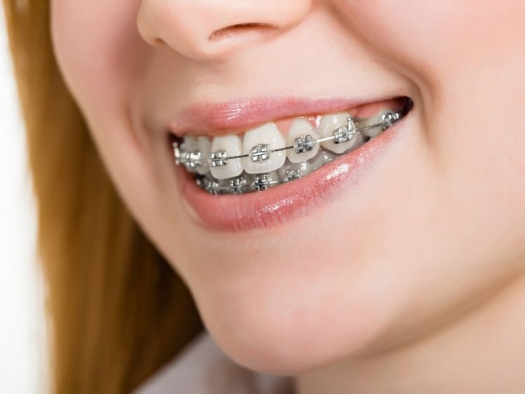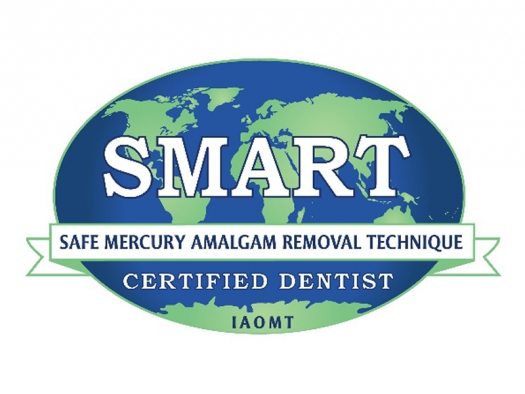TeethWithBraces.jpg

Photo by draw05 / 123rf.com
If you were building a new house, would you be concerned about the materials being used to construct your home? Years ago, asbestos was used in insulation products, fireproofing, acoustical materials and floor tiles. We now know that asbestos causes lung cancer and mesothelioma (cancer of the lining of the chest and the abdominal cavity). Solution? Remove this offensive material from all building products and eliminate the exposure of this dangerous carcinogenic.
Lead and mercury were once used in paint products. Exposure to these vapors or physically ingesting these paint scraps from painted walls, such as by our children, create serious health risks to individuals. Solution? Remove the offensive materials from paint products and eliminate these toxins from public exposures.
Replacing or disposing of these or any other “questionable” materials makes a significant difference in the long-term effects of one’s health status. This is what biological dentistry has taught me in regards to the way I selectively choose the dental materials that we use in our patients’ mouths today.
Restorative materials most commonly used in dentistry consist of: mercury, gold, silver, nickel, chromium, aluminum, palladium, platinum, titanium, copper, tin, plastics, and porcelains. The following materials are referred to as heavy metals: mercury, nickel, aluminum, palladium, silver, and copper.
As trace elements, some heavy metals (e.g., copper, selenium, zinc) are essential to maintain the metabolism of the human body. However, at higher concentrations they can lead to poisoning. Heavy metals are dangerous because they bio-accumulate.
Bio-accumulation means an increase in the concentration of a chemical in a biological organism over time compared to the chemical’s concentration within the environment. Compounds accumulate in living things any time they are taken up and stored faster than they are broken down (metabolized) or excreted.
Symptoms of heavy metal toxicity include mental confusion, pain in muscle joints, headaches, short term memory loss, gastrointestinal upsets, food intolerances/allergies, vision problems, chronic fatigue and others. The symptoms may be so vague that heavy metal toxicity is sometimes difficult to diagnose based on symptoms alone. Therefore, discovering the cause is the real mystery that may actually plague health care practitioners.
In addition to the metals that are used in dentistry, other materials include composites (tooth colored fillings), cements, liquid bonding resins, liners, root canal sealers, and sealants. Can different dental materials affect your health either in a positive or negative manner? Should we be more careful when choosing these materials? The overwhelming answer to both of these questions should be YES.
Aesthetics such as picking colors and shades for your teeth and mechanical solutions such as the bonding strength, hardness, and corrosive resistance of materials are not the only information that is needed when “building the house” in our patients’ mouths.
Biological considerations mean doing everything possible to provide a safe and predictable outcome in the dental treatment offered to patients. For example, we check the compatibility of dental materials before they are placed in one’s mouth.
Picking the most suitable materials can help avoid creating situations of “hard to discover” sensitivities by an individual to the dental materials. These sensitivities can range from mild irritations to extreme reactions such as long term illness, dysfunction, or damage. As new and complex materials are continually developed, the impact that these materials present upon an individual’s body chemistry must be considered.
Materials Reactivity Testing (MRT) is a very accurate and comprehensive clinical blood test that screens for individual systemic sensitivity to bio-materials through antibody detection. This testing is intended to be a screening system to differentiate potentially unsafe materials (those containing components for which the patient has existing systemic sensitivity) from more desirable materials which show no evidence of any current sensitivity issues. (It is not a means of specific diagnosis or prognosis of any disease or condition.)
Over the last five years we’ve compiled a list of dental materials, which we use in our office, that we’ve found have a high compatibility rating based on thousands of MRT laboratory test reports. Any dental material used in our office that we label as “compatible” means that, on the basis of data from more than 46,000 patients, approximately 92 percent to 99 percent of the time these materials are shown as suitable according to the MRT for the respective product.
We also utilize safety measures when removing old dental amalgam fillings. The process is entitled the Safe Mercury Amalgam Removal Technique (SMART) and is based on scientific research collected by the International Academy of Oral Medicine and Toxicology (IAOMT).
When it comes to taking care of your health, why should your mouth be any less important than the rest of your body? Don’t be afraid to ask your dentist questions about the materials being used in your mouth. Be informed. Educate yourself about these unique and exciting developments that are occurring in the field of biological dentistry.



